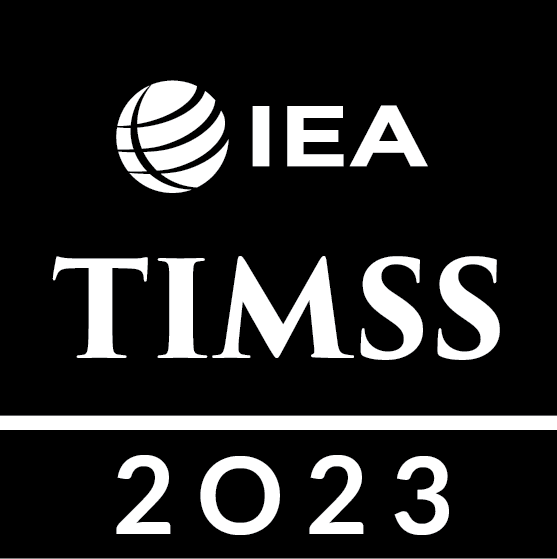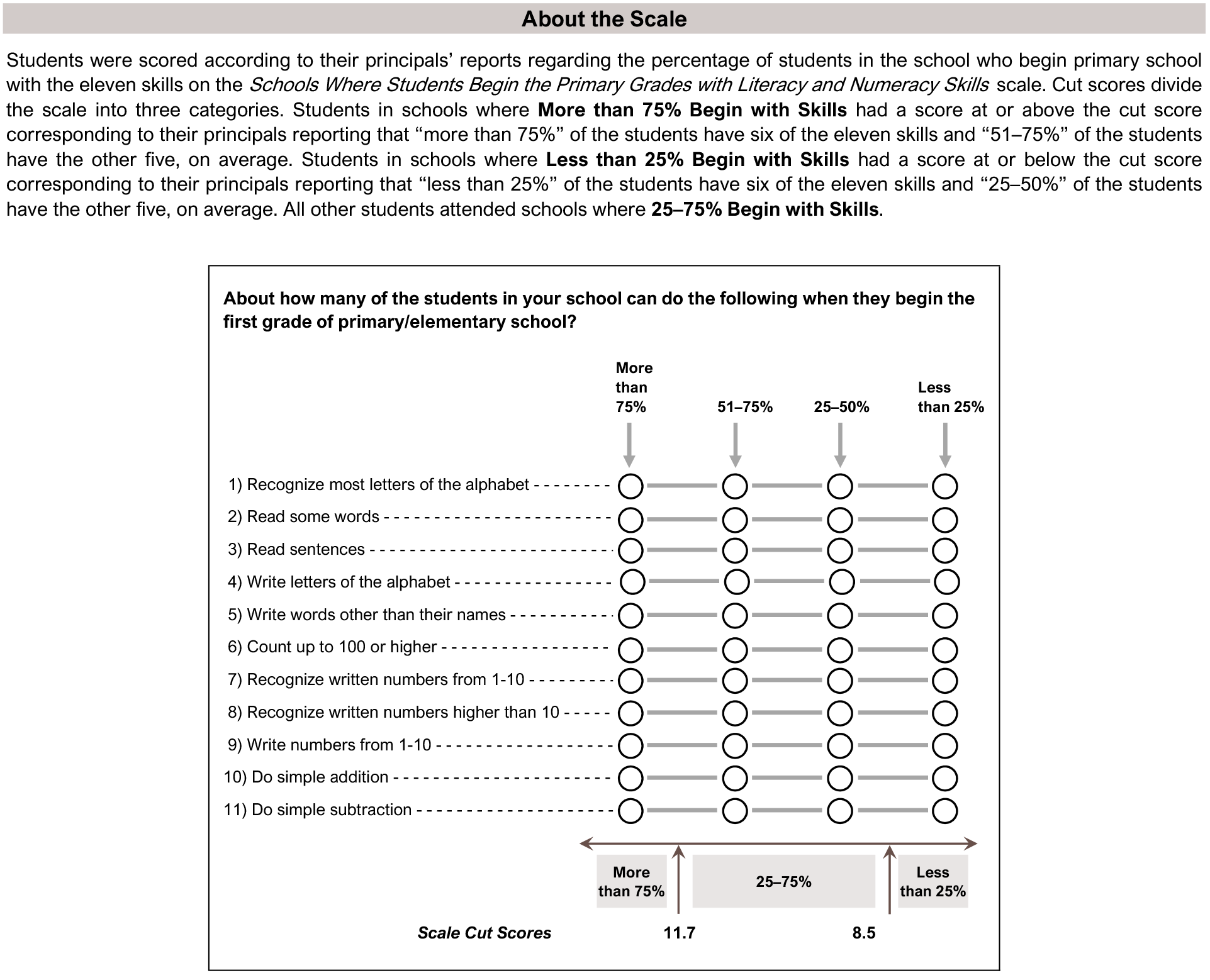Schools Where Students Begin the Primary Grades
With Literacy and Numeracy Skills –
Principals’ Reports
School Environment
Literacy and Numeracy Skills of Entering Student Body
Fourth-grade students in schools where at least 25% of the students begin the primary grades with basic literacy and numeracy skills have higher average mathematics and science achievement than students in schools where less than 25% of students begin the primary grades with these skills. Average achievement differences are much more modest once the 25% threshold is reached. The TIMSS 2023 Schools Where Students Begin the Primary Grades With Literacy and Numeracy Skills scale (Exhibit 4.1.6) reflects school principals’ estimates of the percentage of students in the school who possessed a range of literacy and numeracy skills when beginning primary school. Based on principals’ responses, students were classified as attending schools where “more than 75% begin with skills,” “25-75% begin with skills,” or “less than 25% begin with skills.”
On average internationally, 24 percent of students attended schools where “more than 75%” of students begin the primary grades with basic literacy and numeracy skills. There is a great deal of variation in the percent of students in this category across countries, likely because students’ skills when entering primary school are closely related to policies regarding pre-primary education and age of entry to primary school. A small majority of students (56%, on average) attended schools where “25%-75%” of students begin school with these skills and 20 percent of students were in schools where “less than 25%” of students begin school with these skills.
In both mathematics and science (Exhibits 4.1.7 and 4.1.8, respectively), there is a small difference in average achievement between students in schools where “more than 75%” of students begin school with literacy and numeracy skills and students in schools where “25%-75%” of students begin with these skills (512 vs. 502 in mathematics and 504 vs. 493 in science). Students in schools where “less than 25%” of students begin primary schools with literacy and numeracy skills have somewhat lower average achievement in both subjects (481 in mathematics and 471 in science).
Read More
Literacy and Numeracy Skills of Entering Student Body – Principals’ Reports
Very High Emphasis
High Emphasis
Medium Emphasis
This TIMSS context questionnaire scale was established in 2015 based on the combined response distribution of countries that participated in TIMSS 2015. To provide a point of reference for country comparisons, the scale centerpoint of 10 was located at the mean of the combined distribution. The units of the scale were chosen so that 2 scale score points corresponded to the standard deviation of the distribution.
( ) Standard errors appear in parentheses. Because of rounding some results may appear inconsistent.
An “r” indicates data are available for at least 70% but less than 85% of the students.
An “s” indicates data are available for at least 50% but less than 70% of the students.
A tilde (~) indicates insufficient data to report result.
Scroll Up

